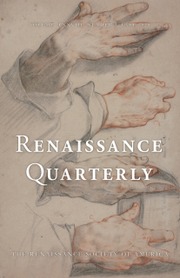This work complements two other important contributions to The Other Voice series by Colette Winn (with collaborators): Sin and Salvation in Early Modern France (2017) and The Huguenot Experience of Persecution and Exile (2019). Each of these present translations of little-known texts by early modern French women that illuminate their experiences of religious and political turbulence and physical displacement. Each explores the relationships between gender and genre in women’s letters and memoirs. All three are valuable both for teaching and for English-speaking scholars working in related fields.
The current volume presents travel writings by Marie de l’Incarnation (1599–1672), Anne-Marie Fiquet Du Boccage (1710–1802), and Henriette-Lucie Dillon de la Tour du Pin (1770–1853). Fascinating in themselves, these accounts encourage comparative study. The women come from very different backgrounds, and the experiences recounted occur during different time periods and evolving political and religious situations. Both Marie de l’Incarnation and Madame Du Bocage recount their experiences of travel through distant lands in letters, but with quite different audiences and objectives. Though presented as a letter to her surviving son, the Marquise de la Tour du Pin’s account is in the form of a journal, apparently based on earlier diary entries. All three illustrate the strategies that they, as traveling women, used to protect their reputations and authorize their movement through multiple spaces. All three explore the suffering endured by the female traveler’s body while crossing great distances and living in unfamiliar settings.
Marie de l’Incarnation, born into a merchant family in Tours, was an Ursuline nun living in New France. The letters chosen here focus on her mission to teach and on her accounts of the Amerindian girls who came to her convent. Writing to her superiors and patrons in France and to her son, a Benedictine monk, she offers a dramatic account of her voyage and a positive view of the impact of the teaching and missionary work of the Ursulines, with charming portraits of individual girls in their school. The letters selected emphasize travel, teaching, and responses to otherness; we get a limited impression of Marie’s mystical writing, and of her competence as a businesswoman and political actor.
Du Boccage enjoyed the life of a wealthy upper-class woman, frequenting Parisian academies and salons. Already a published author and translator, she traveled, with her husband, to improve herself and to meet her social and intellectual peers in England, Holland, and Italy. She writes to her sister, who had asked for an account of her experiences; thus, she can omit information available in other accounts, and turn her attention to her own impressions of famous sights and the notable people whom she met and who “spoiled” her (162). Though she argues that she travels to learn from others, she has definite opinions about much of what she observes. Obviously also written for a wider public, Du Boccage’s letters were published in her lifetime.
The Marquise de la Tour du Pin was a member of the minor provincial nobility. Her journal runs from 1778 to 1815. It includes her observations of, and reactions to, the Revolution and the rise and fall of Napoleon. The section chosen begins with her account of the family’s voyage to America in 1794 to escape the Terror, covering the two years when she lived with her husband and children on a farm near Albany, New York (the happiest time of her life). The selection ends with her turbulent journey home across the Atlantic and via Spain, in 1796, when her husband was able to recover much of the family’s property. The marquise was pregnant when they began their journey home, and achieved her goal of not giving birth until they reached France.
The introduction offers a useful analysis of these texts within the context of travel writing, gender, and genre. The notes and indexes are generous, and the bibliography thorough. This work is admirable for the involvement of younger scholars. As the editor points out, all these works are available in French and in English translations (now dated). This volume’s contribution is to bring together substantial selections of travel writing by three very different women that encourage comparative analysis, and to “gear the translation linguistically and culturally to the twenty-first century,…capturing the energy of the source texts in order to maintain the reader’s interest” (60).



